Operating
Mon - Fri | 9:00AM - 5:00PM
Free Quotes
(780) 934-6990
Inquire
info@replacementexperts.com
Mon - Fri | 9:00AM - 5:00PM
(780) 934-6990
info@replacementexperts.com
For All Your Residential and Commercial Concrete Replacement Needs;
We stick to the basics and we do it extremely well.
Our Main Focus is HOMEOWNER EDUCATION.
Our Secondary Focus is Full Driveway and Garage Floor Replacement.
We start with impeccable ground preparation, install the raw materials at higher-than-industry standards, then finish the final product properly: Smooth and level without any puddles.
We replace or install flat concrete in all sorts of residential situations and some light commercial applications.
And we do it quickly and at a price that’s affordable and acceptable to the typical homeowner
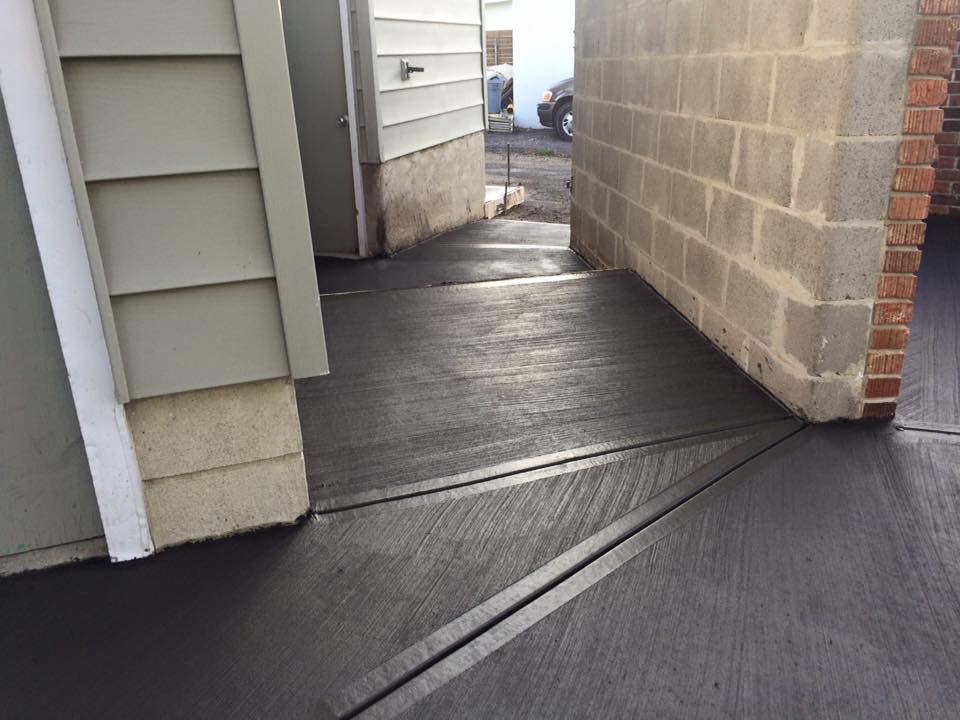
In My Opinion: Approximately 75 – 85% of all concrete failures are a man-made problem created by the contractor who did the original work, and with the material they used or used incorrectly. In the following page, I’ll describe common problems and how we avoid them.
Founder, Wade
⁺ Is your concrete driveway Broken, Cracked & Sunk or Heaving so badly it’s creating dangerous trip hazards?
⁺ Has the floor in your garage sunk so badly it allows water to enter from the overhead door or pool in the middle causing a dangerous slip hazard in the wintertime?
⁺ Have the cracks in your driveway become so wide grass, weeds, and other vegetal matter is starting to grow in them taller than your lawn?
⁺ Has the City replaced the sidewalk and curb in front of your home making your driveway and sidewalk look even worse?
⁺ Do you want to improve the curb appeal and value of your home Quickly & Easily?
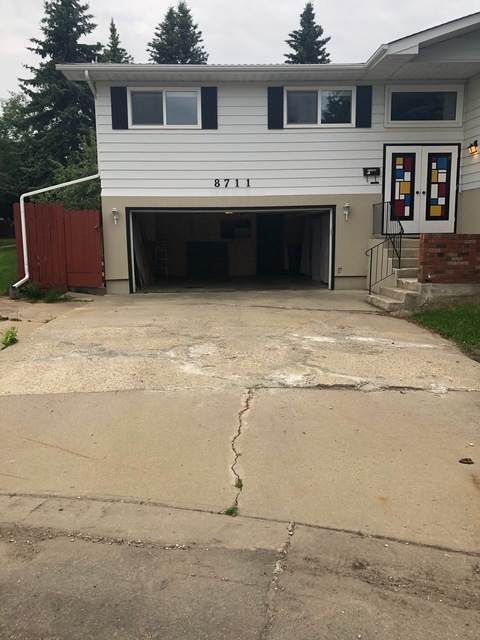
Does your concrete driveway look like this?
We have a very unique view of concrete, because our entire focus is on concrete replacement we see the repetitive failures, and their causes, on every job we do.
The same failure points that resulted in your driveway looking the way it does.
Most concrete installers never come back to see their own work so they never see what it looks like or how it’s holding up 5–10-15 years later. All we do is see other people’s old work and what caused it to fail and then we continually improve our methods to prevent future failures.
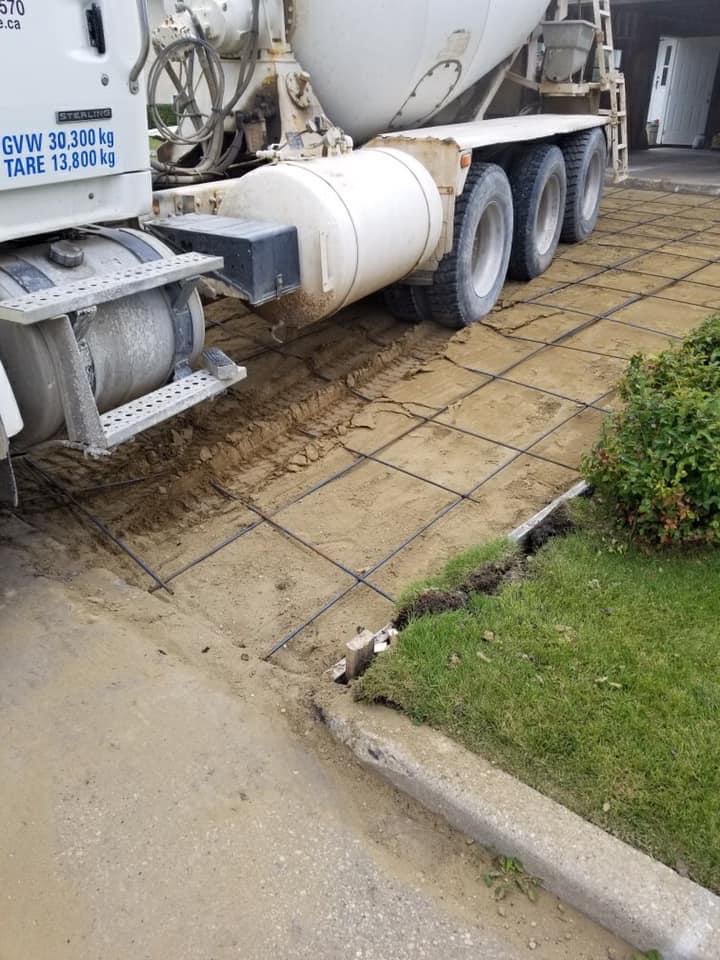
Avoid this at all costs!
You’ll deal with our professional estimators who’ll arrive at your home in a clean button-up shirt & jacket. They’ll spend time with you discussing your project to get a clear understanding of your ideas, needs, and expected outcomes.
Depending on the project they may need to return to our office to work out your quote or they may be able to finish it right there. Either way, when they’re done you’ll receive a detailed written quote guaranteed for 45 days.
When we come to an agreement we’ll both sign to ensure the details are correct, we’ll give you an estimated start & completion time, then once the date gets closer we’ll give you an exact start time.
Before we start work on your property we’ll inform your neighbours of our start date, the scope of work, and how it may or may not affect them and the public streets. When we arrive to work on your property our installers won’t smoke on your property, we’ll clean up any mess we make daily including sweeping the street when we’re finished.
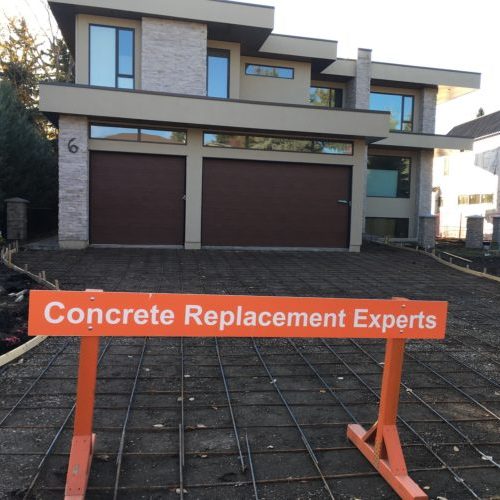
For us, it’s all about the customer experience
These examples are viewed as a driveway leading to a front attached garage, the majority of these issues can apply to any slab on grade.
When rebar (Reinforcement steel) isn’t in the middle of the slab thickness and/or spaced too far apart, it can’t do its job properly. No structural engineer in the world will tell you that concrete won’t crack because it will. Rebar installation seems simple enough, and it is, but most contractors don’t install it correctly and frequently use too little of it.
A sagging “slab on grade” is the result of poor compaction of the ground before the sub-base is installed then a poor sub base: Improper base material used, inadequate thickness of base material, inadequate compaction AND a concrete slab with less than ideal strength because the concrete is too thin, too little rebar and improper installation / placement of the rebar.
We have the proper equipment for the job.
¯ We use small track-loaders (like a bobcat) for the concrete removal to minimize the damage to your yard, or by hand if we have to (for the front sidewalk). Typically there is no additional damage to your yard beyond the edge of the existing concrete work area.
¯ We remove all of the existing concrete AND any faulty base material such as deep fluffy sand, black dirt, mud, or wet soggy areas.
¯ Then we replace the faulty base with proper road building material ie. Crushed Rock referred to as “ROAD CRUSH” not sand or screened rock with sand. Road Crush is 3/4″ rock for strength and all sizes down to fine particulate which allows for better compaction than plain sand, or plain sand with a few rocks, which is a horrible base material.
¯ The area is raked smooth and compacted. Water is sprayed over the area during this process in order to assist with the compaction. Ever tried making a snowball with dry snow? It doesn’t work very well does it?
¯ Then we install 10 mm rebar at 12 inch intervals, more near the corners, the edge, or ends of the slab where it meets the road or garage pad. The industry standard is 16” on center. Many concrete contractors cheap out with 24’ centers and no bar along the edge of the slab. It makes my blood boil when I see this.
¯ Our rebar is placed on plastic “chairs” which holds the bar in place off the ground and above the mid way point of the concrete thickness. Most contractors just lay it on the ground and pull it up as they pour but concrete goes in as a liquid and steel rebar is heavy so it frequently sinks to the bottom of the concrete slab rendering it completely useless.
¯ We always use 2×6 forms for everything not the typical 2×4, so we quote our concrete minimum thickness at 5 inches NOT the typical 3.5 – 4” used by many contractors.
¯ We always use 32 mpa (strength) concrete for everything we pour outside. This is the highest strength you can get for residential use without requesting a commercial blend which is typically used for major roads, commercial properties where big trucks are present, etc.
¯ At the time of finishing we also add control joints (relief cuts, the little lines you see in all concrete) by marking the concrete with “grooves” or “wet-saw” cutting it to control cracking. If the concrete does crack the intent is it should occur along these lines where it is less noticeable.
¯ And many other points that will be explained in detail by your estimator when on-site at your residence.
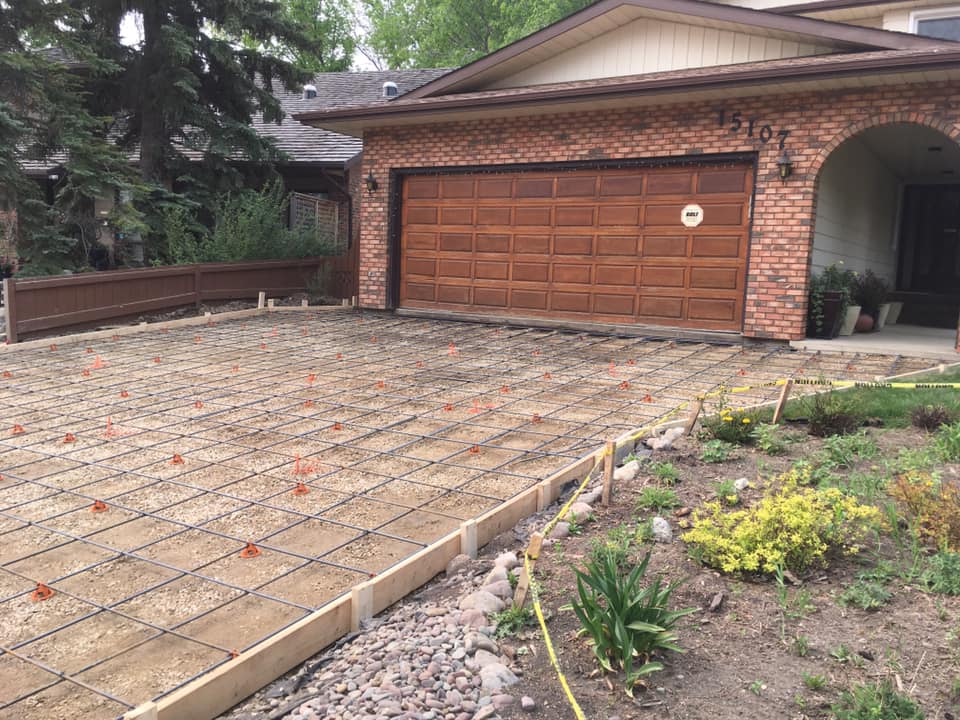
Impeccable Ground Preparation;
Higher than Provincial Standard
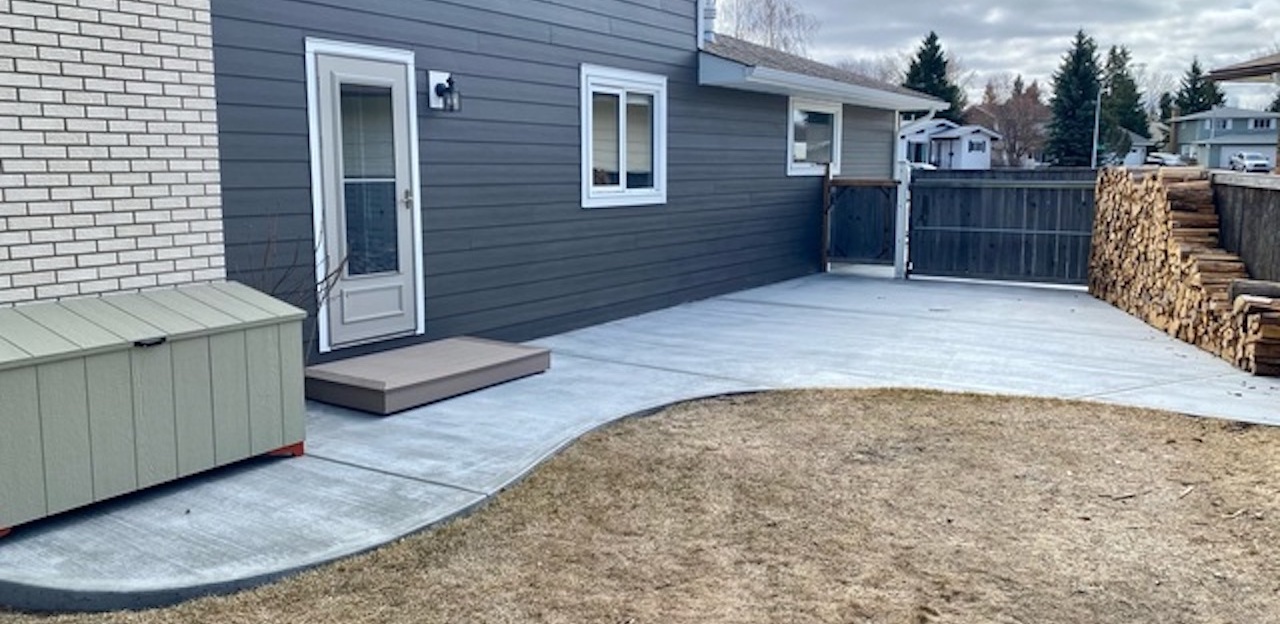
Driveways | RV Pads | Garage Pads | Walkways
𝕏𝕩 High Customization
𝕩 Small Projects
𝕩 Concrete Lifting / Mud-Jacking
𝕩 Rubberized Paving
We are an equipment-based company with a small labour force relative to the projects we do. This means we tend to avoid “labour intense” projects like manually digging out a patio or quoting small jobs like replacing a small stand-alone sidewalk. We typically don’t get involved in back yard patios, highly customized projects, stamped concrete, acid-etched finishes, overlays, structural walls, foundations, retaining walls, etc.
Almost every job we do has a driveway or a garage pad involved, and typically a sidewalk to the front door or around the front side of the garage. We stick to the basics and we do it extremely well.
Concrete Lifting, Mud-Jacking, or whatever they choose to call it: Same concept with different methods. It’s a Temporary Solution to Level Uneven Concrete BUT It’s Not a Permanent Fix To An Ongoing Problem.
The issue isn’t the concrete, it’s the sloppy sinking base material below it. The sand is squishy, washing out, and so the concrete is sinking. Polyurethane lifting, mud jacking, or whichever method being used is simply pumping a new material in between the concrete and the sinking base material below it, but it doesn’t fix the squishy problem. The lifting material might hold for 2+ years, maybe 5 years but it’s not a fix, it’s a temporary band-aid.
Rubberized Paving or whatever they want to call it; The latest fad in driveway band-aids is a rubberized layer of shredded tires being layered over an old, cracked, sinking driveway. Again, the sinking problem is still there and will continue to sink. And as typical each crack will transmit through the new layer on top, this is unavoidable. That’s what cracks do, as the broken concrete underneath the rubber layer moves around with the seasons, it’ll cause the cracks to transmit. If the concrete is spalling (little pieces breaking off) this will continue so now you’ll have broken concrete pieces under a new rubber layer that will slowly grind thru causing new damage.
If you’re curious and would like to learn more and what it would cost to replace your driveway, garage pad, front sidewalk, etc. then…
Please call us today for A FREE NO OBLIGATION QUOTE